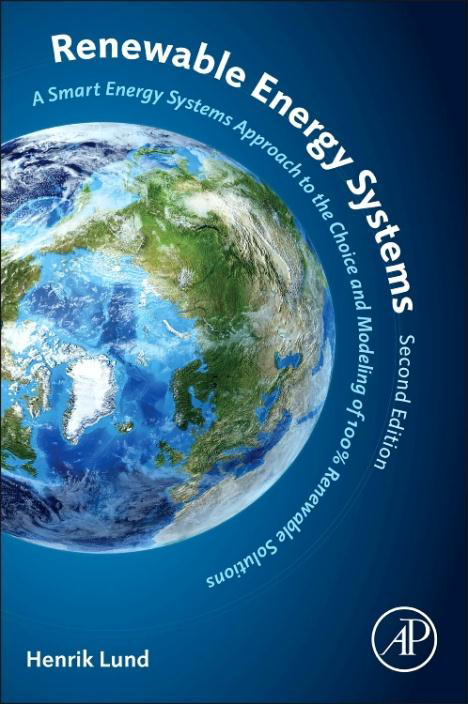Key Features
- Contextualizes renewable energy design efforts by addressing the socio-political challenge of implementing the shift to renewable
- Free companion analysis software empowers energy professionals to crunch data for their own projects
- Features a dozen extensive case studies from around the globe that provide successful real-world templates for new installations
This important new guide to the practical implementation of Renewable Energy Systems from renowned expert Dr. Henrik Lund provides a clear methodology for determining an energy system’s ability to integrate fluctuating and intermittent renewable energy sources. Dr. Lund offers a freely available accompanying software tool, EnergyPLAN, that automates and simplifies the calculations supporting such detailed analysis.
The book further presents concrete design examples derived from a dozen successfully implemented renewable energy systems around the globe. Dr. Lund makes valuable recommendations on the first steps of large-scale integration, focusing on the more immediate issue of conversion, rather than storage technologies. Includes case studies by renewable energy experts Woodrow Clark II, 2007 Nobel Peace Prize winner; Willet Kempton, Director of the Center for Carbon-free Power Integration at the University of Delaware; and Paul Quinlan, Director of Economic Research and Development at the North Carolina Sustainable Energy Association.
Table of Contents
Abbreviations
Acknowledgements
- Introduction
1) Choise and Change
2) Choise Perception and Elimination
3) Raising Choise Awareness - Theory: Choise Awareness Theses
1) Choise and Change
2) Choise Perception and Elimination
3) Raising Choise Awareness - Methodology: Choise Awareness Strategies
1) Technical Alternatives
2) Economic Feasibility Studies
3) Public Regulation
4) Democratic Infrastructure
5) Research Methodology - Tool: The EnergyPLAN Energy System Analysis Model
1) Overall Considerations
2) The EnergyPLAN Model
3) Reflections - Analysis: Large-Scale Integration of Renewable Energy
1) The Danish Reference Energy System
2) Excess Electricity Diagrams
3) Optimal Combinations of RES
4) Flexible Energy Systems
5) Different Energy Systems
6) Grid Stability
7) Local Energy Markets
8) Integration of Transport
9) Electric Vehicles and V2G
10) Electricity Storage Options
11) Conclusions - Analysis: 100 Percent Renewable Energy Systems
1) The Los Angeles Community College District Case
2) The First Approach to Coherent Renewable Energy Systems
3) The Danish Society of Engineers’ Energy Plan
4) Reflections - Empirical Examples: Choise Awareness Cases
1) Case I: The Nordkraft Power Station (1982–1983)
2) Case II: The Aalborg Heat Planning (1984–1987)
3) Case III: The Evaluation of Biogas (1990–1992)
4) Case IV: The Nordjyllandsværk (1991–1994)
5) Case V: The Transmission Line Case (1992–1996)
6) Case VI: European EIA procedures (1993–1997)
7) Case VII: The German Lausitz Case (1993–1994)
8) Case VIII: The Green Energy Plan (1996)
9) Case IX: The Thai Power Station Case (1999)
10) Case X: The Economic Council Case (2002–2003)
11) Case XI: The North Carolina Case (2006–2007)
12) Case XII: The IDA Energy Plan 2030 (2006–2007)
13) Summary
14) Conclusions - Conclusions and Recommendations
1) Conclusions
2) Recommendations
Contact Professor Henrik Lund here




